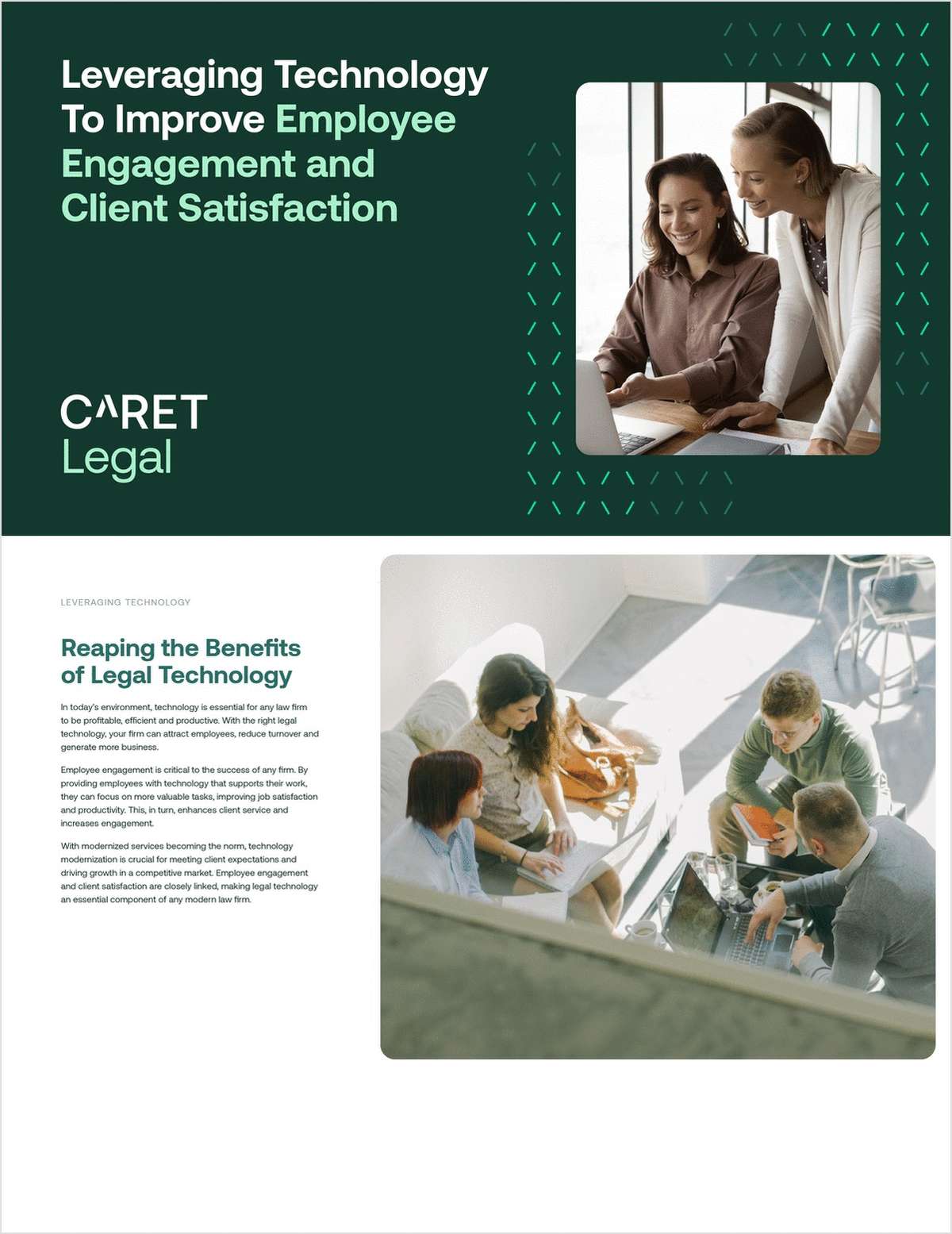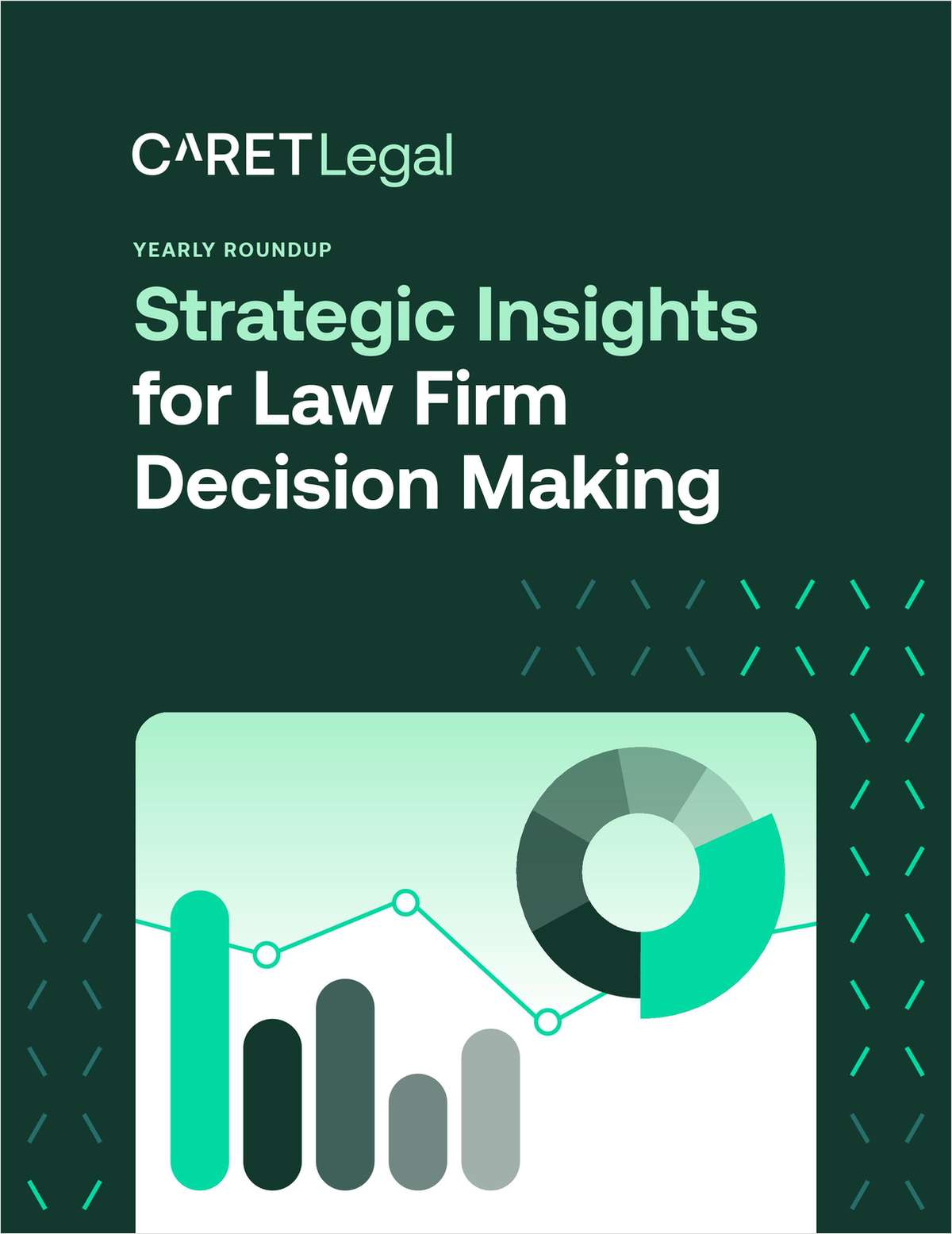'Joint Employment' Rulings Face Tests in US Supreme Court, DC Circuit
As the business community awaits a federal appellate court decision on the National Labor Relations Board's definition of "joint employer," another key labor case—one that also looks at the relationships between companies—is moving forward in the U.S. Supreme Court.
July 17, 2017 at 01:28 PM
7 minute read
As the business community awaits a federal appellate court decision on the National Labor Relations Board's definition of “joint employer,” another key labor case—one that also looks at the relationships between companies—is moving forward in the U.S. Supreme Court.
The case in the U.S. Court of Appeals for the D.C. Circuit—Browning-Ferris International v. NLRB—challenges how the agency defines “joint employer” under the National Labor Relations Act. The outcome could have wide implications for collective bargaining and private sector employers.
Meanwhile, major business groups, including the U.S. Chamber of Commerce and the National Association of Manufacturers, weighed in this month at the Supreme Court in a separate change to “joint employer” under the Fair Labor Standards Act. The groups urged the justices to grant review in DirecTV v. Hall. The justices are scheduled to take their first look at the case at their conference on Sept. 28.

Photo: Diego M. Radzinschi/NLJ
Mayer Brown's Evan Tager filed the petition, challenging a ruling from the federal appeals court in Richmond, Virginia. The Fourth Circuit in January revived claims from two groups of satellite television technicians who brought labor-law violations based on the joint relationships of their employers.
The Fair Labor Standards Act, or FLSA, unlike the National Labor Relations Act sets minimum wage, overtime pay, recordkeeping, and child labor standards for full-time and part-time, private and public sector workers. The labor relation law, on the other hand, protects the collective bargaining rights of employees.
“There is virtually no industry—retail, construction, agriculture, janitorial services, manufacturing, warehousing and logistics, hospitality—unaffected by legal disputes over this issue,” Jones Day's E. Michael Rossman wrote in the amicus brief for the U.S. Chamber in the high court. “Joint employment liability has become the theory du jour among FLSA plaintiffs in recent years. These sorts of cases have exploded.”
To the business advocates who are supporting DirecTV's petition, the Fourth Circuit's test is an outlier among the circuit courts. But it also is an example, they argue, of the proliferation of different multifactor tests that are being used to determine when employers are joined together under the FLSA and other federal statutes.
Business advocates voiced their concerns about those multiple tests and the Browning-Ferris case on July 12 at a hearing of the House Committee on Education and the Workforce.
Satellite Techs Make Their Case
The DirecTV case stems from overtime claims by two groups of satellite installation technicians. Last October, a three-judge panel of the Fourth Circuit found the technicians were jointly employed by DirecTV—the nation's largest satellite television provider—and intermediary companies with whom the company had contracted for work.
The appeals panel rejected a trial judge's reliance on four nonexclusive factors used by another federal appeals court, the Ninth Circuit, for determining whether employers are jointly liable for purposes of the FLSA. Under the appropriate test, the Fourth Circuit said, the technicians' factual allegations “plausibly demonstrate” that DirecTV and DirecSAT jointly employed them.
The panel, led by Judge James Wynn Jr., said the joint employer regulation in the FLSA was relatively straightforward, but courts had long struggled to come up with a coherent test for distinguishing separate employment from joint employment. Wynn blamed the Ninth Circuit's test for much of the confusion.
Courts must focus first on the relationship between putative joint employers and whether they are “not completely disassociated” with respect to the workers' work, Wynn wrote, and not, as the district court did first, on whether the worker was an employee or independent contractor.
Under the proper first step, the appellate panel said, the fundamental question is “whether two or more persons or entities are 'not completely disassociated' with respect to a worker such that the persons or entities share, agree to allocate responsibility for, or otherwise codetermine—formally or informally, directly or indirectly—the essential terms and conditions of the worker's employment.” The panel then listed six factors to consider in making that determination.
Mayer Brown's Tager, an appellate partner in the firm's Washington office, said the focus is the same in any multifactor test applied by the courts that have looked at this issue: What is the relationship between the putative joint employer and the workers?
“What was unique about our case was that the circuit court adopted a new standard that focuses on the relationship between the two putative employers,” Tager said. “Under that standard, a defendant can be deemed a joint employer even if all of the traditional indicia of an employment relationship are absent.”
In practical terms, Tager said in his petition, the Fourth Circuit standard means that many businesses will be treated as joint employers of workers who are employed by third-party contractors or franchisees.
“After all, in virtually any agreement in which a firm imposes requirements on an outside contractor or franchisee, it might be said that the two companies have 'allocated the ability to direct the worker by direct or indirect means,'” Tager wrote in DirecTV's petition.
The Supreme Court has not said much about the limits of the employer-employee relationship under the Fair Labor Standards Act. It has held that “economic reality” is the test of employment under the act.
The business advocates supporting DirecTV want the justices to reverse the Fourth Circuit decision.
It would be “immensely helpful” if the court just reverses because the decision is “an outlier standard and just a nonsensical approach” to evaluating joint employer status, said Rae Vann of the Equal Employment Advisory Council, an amicus party that has asked the justices to review the dispute.
“As the traditional tests have gone, there are variations, but they all revolve around the concept of economic reality and the extent to which a putative joint employer has a direct control relationship to the worker in question,” she said. “To the extent the court would bring clarity to the meaning of economic reality, that would be extremely beneficial to the business community.”
DirecTV's opponents have waived their right to file a brief in opposition to the petition. But labor and employment scholar Michael Harper of Boston University School of Law said he does not see the Fourth Circuit decision as an outlier or a “radical expansion” of the joint employer standard under the Fair Labor Standards Act.
The decision, Harper said, is “another attempt to analyze these developing, mutating proliferating, variant economic relationships that we have in our economy between dual or multiple entities. It's not clear to me it necessarily expands anything.”
Congress intended the Fair Labor Standards Act to be broader than the other labor-related laws, Harper said.
“There are many different tests and this is particularly true for the FLSA where the Supreme Court has not recently tried to tie anything down,” Harper said. “There hasn't been a Supreme Court decision to assert some clarity under the FLSA for a while.”
This content has been archived. It is available through our partners, LexisNexis® and Bloomberg Law.
To view this content, please continue to their sites.
Not a Lexis Subscriber?
Subscribe Now
Not a Bloomberg Law Subscriber?
Subscribe Now
NOT FOR REPRINT
© 2025 ALM Global, LLC, All Rights Reserved. Request academic re-use from www.copyright.com. All other uses, submit a request to [email protected]. For more information visit Asset & Logo Licensing.
You Might Like
View All
Apple Files Appeal to DC Circuit Aiming to Intervene in Google Search Monopoly Case
3 minute read
DC Circuit Revives Firefighters' Religious Freedom Litigation in Facial Hair Policy Row
3 minute read
Judges Split Over Whether Indigent Prisoners Bringing Suit Must Each Pay Filing Fee

4th Circuit Upholds Virginia Law Restricting Online Court Records Access
3 minute readTrending Stories
- 1Uber Files RICO Suit Against Plaintiff-Side Firms Alleging Fraudulent Injury Claims
- 2The Law Firm Disrupted: Scrutinizing the Elephant More Than the Mouse
- 3Inherent Diminished Value Damages Unavailable to 3rd-Party Claimants, Court Says
- 4Pa. Defense Firm Sued by Client Over Ex-Eagles Player's $43.5M Med Mal Win
- 5Losses Mount at Morris Manning, but Departing Ex-Chair Stays Bullish About His Old Firm's Future
Who Got The Work
J. Brugh Lower of Gibbons has entered an appearance for industrial equipment supplier Devco Corporation in a pending trademark infringement lawsuit. The suit, accusing the defendant of selling knock-off Graco products, was filed Dec. 18 in New Jersey District Court by Rivkin Radler on behalf of Graco Inc. and Graco Minnesota. The case, assigned to U.S. District Judge Zahid N. Quraishi, is 3:24-cv-11294, Graco Inc. et al v. Devco Corporation.
Who Got The Work
Rebecca Maller-Stein and Kent A. Yalowitz of Arnold & Porter Kaye Scholer have entered their appearances for Hanaco Venture Capital and its executives, Lior Prosor and David Frankel, in a pending securities lawsuit. The action, filed on Dec. 24 in New York Southern District Court by Zell, Aron & Co. on behalf of Goldeneye Advisors, accuses the defendants of negligently and fraudulently managing the plaintiff's $1 million investment. The case, assigned to U.S. District Judge Vernon S. Broderick, is 1:24-cv-09918, Goldeneye Advisors, LLC v. Hanaco Venture Capital, Ltd. et al.
Who Got The Work
Attorneys from A&O Shearman has stepped in as defense counsel for Toronto-Dominion Bank and other defendants in a pending securities class action. The suit, filed Dec. 11 in New York Southern District Court by Bleichmar Fonti & Auld, accuses the defendants of concealing the bank's 'pervasive' deficiencies in regards to its compliance with the Bank Secrecy Act and the quality of its anti-money laundering controls. The case, assigned to U.S. District Judge Arun Subramanian, is 1:24-cv-09445, Gonzalez v. The Toronto-Dominion Bank et al.
Who Got The Work
Crown Castle International, a Pennsylvania company providing shared communications infrastructure, has turned to Luke D. Wolf of Gordon Rees Scully Mansukhani to fend off a pending breach-of-contract lawsuit. The court action, filed Nov. 25 in Michigan Eastern District Court by Hooper Hathaway PC on behalf of The Town Residences LLC, accuses Crown Castle of failing to transfer approximately $30,000 in utility payments from T-Mobile in breach of a roof-top lease and assignment agreement. The case, assigned to U.S. District Judge Susan K. Declercq, is 2:24-cv-13131, The Town Residences LLC v. T-Mobile US, Inc. et al.
Who Got The Work
Wilfred P. Coronato and Daniel M. Schwartz of McCarter & English have stepped in as defense counsel to Electrolux Home Products Inc. in a pending product liability lawsuit. The court action, filed Nov. 26 in New York Eastern District Court by Poulos Lopiccolo PC and Nagel Rice LLP on behalf of David Stern, alleges that the defendant's refrigerators’ drawers and shelving repeatedly break and fall apart within months after purchase. The case, assigned to U.S. District Judge Joan M. Azrack, is 2:24-cv-08204, Stern v. Electrolux Home Products, Inc.
Featured Firms
Law Offices of Gary Martin Hays & Associates, P.C.
(470) 294-1674
Law Offices of Mark E. Salomone
(857) 444-6468
Smith & Hassler
(713) 739-1250








